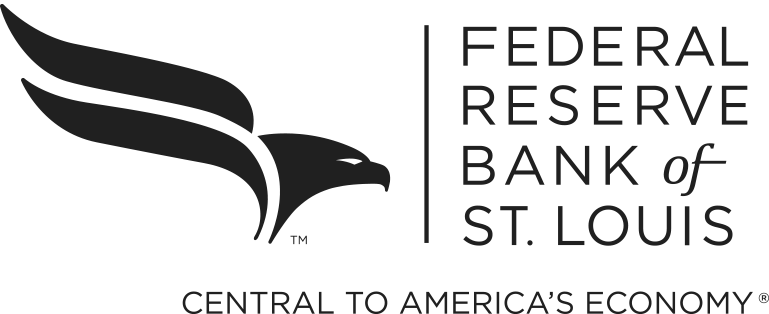Making Sense of the Ups and Downs of Prices
"In spite of the cost of living, it's still popular."
—Kathleen Norris
How Do You Know the Real Price of Something?
"Back in my day, a gallon of gas cost a quarter!" Has your grandfather ever said something like this to make a point about how expensive things are now? The chart shows the prices of gasoline over the past 20 years. The price of gasoline indeed used to be much lower. In fact, the price of gasoline has risen from a little over $1 per gallon in 1992 to a little over $3.50 per gallon 20 years later.1 However, this type of data cannot be interpreted casually because the prices do not account for inflation—the rise in the general price level—which must be factored in to accurately compare prices over time. This process is often referred to as deflating and involves using commonly agreed-upon measures of inflation, such as the Consumer Price Index, to account for inflation.
SOURCE: Federal Reserve Bank of St. Louis FRED (http://research.stlouisfed.org/fred2/graph/?g=kPP).
We first take the prices as given (that is, the nominal prices) and adjust for inflation, because we need to measure the two prices in constant terms. (A price adjusted for inflation is called the real price.) So, what would the real price of a 1992 gallon of gas be if purchased in 2012? The answer is approximately $1.782—only about a 99 percent (not 226 percent) increase—but still a pretty dramatic increase. In other words, the price of gas almost doubled from 1992 to 2012 when measured in terms of other goods and services.
This example shows the price increase for just one good, but inflation reflects the increase in the general price level for all goods. Occasionally, the general price level can fall but this happens less often. A fall in the general price level over a sustained period, as during the Great Depression in the United States, is known as deflation.
Costs of Inflation and Deflation
Unexpected inflation and deflation have consequences and costs. Since inflation occurs more frequently, we discuss its costs first. Inflation is costly for anyone who holds on to a large amount of cash (in a non-interest-bearing account) because cash will not buy as much tomorrow as it will today. In times of high inflation, people have incentives to keep as little cash on hand as possible, which means frequent trips to the bank or automated teller machines (and wearing out your shoes). Shoe-leather costs are the term used for these trips.
Second, inflation is costly in terms of menu costs, which are the costs incurred by firms when they change the prices of their goods. When prices are stable, firms have little incentive to change prices as long as they are maximizing profits. However, when prices change, as occurs with inflation, firms either have to change prices to keep pace with inflation or operate at prices that do not maximize profits. For example, if a restaurant changes its prices, it incurs the cost of printing new menus with the new prices for meals (hence the origin of the "menu" term).
A third cost of inflation is related to the use of resources in producing goods and services. Consumers decide what goods and services to buy by comparing the prices and quality of various goods and services. Their decisions determine whether steel is allocated, for example, to minivans or sports cars or whether milk is allocated to cheese or ice cream. Inflation causes the prices of some goods to rise more than others. This means when consumers make these price comparisons in times of high and unstable inflation, they are using garbled price information and resources are not allocated to their best use.
Fourth, inflation distorts money's ability to act as a standard measure of value, which causes inconvenience and/or confusion.3 For example, imagine how confusing it would be if 1 inch this year did not equal exactly 1 inch next year. We expect units of measurement to be constant over time, and inflation erodes money's ability to maintain a constant value.
Finally, it is worth noting that the above-mentioned costs all occur even if inflation is expected. However, when inflation is unexpected, it has an additional cost: the arbitrary redistribution of wealth. Since not all interest rates on investments or debt take inflation into account, inflation benefits those who borrow money by lowering the real cost of their debt. In other words, people who borrow money will repay their loans with dollars that are worth less than the ones they borrowed, thus arbitrarily making them wealthier. Conversely, unexpected inflation hurts investors, savers, and lenders by lowering the real return on their assets. For example, lenders will be repaid with dollars that are worth less today than the ones they lent, thus arbitrarily making them less wealthy.
Deflation occurs less often than inflation but also creates economic costs. Some costs, such as menu costs and relative price changes, mirror inflation costs. However, deflation is perhaps most costly because it is usually triggered by a weak economy; thus, it arises amid other undesirable economic episodes (e.g., stagnant growth or high unemployment).
Price Stability
When inflation is low and stable, both producers and consumers are better able to plan for the future, keeping economic growth and employment stable as well. Therefore, as one part of its congressional dual mandate, the Federal Reserve System seeks to promote price stability. The Fed uses monetary policy to promote a low and stable inflation rate (around 2 percent) by influencing interest rates and the money supply.4 However, it is important to keep in mind that monetary policy affects the average rate of inflation over the long run. People's expectations about prices matter more for inflation over shorter periods.
Conclusion
Comparisons of prices from one period with prices in another period must take inflation into account. Economic costs are associated with both inflation and deflation. Since price instability is costly, it is the Fed's mission to use monetary policy to promote stable prices.
Notes
1 Actual prices were $1.09 and $3.55 per gallon, respectively, for an increase of 226 percent (rounded). This is calculated as follows: (($3.55 – $1.09) / $1.09) × 100 = 226% (rounded).
2 Source: Bureau of Labor Statistics Consumer Price Index Data—All Urban Consumers: All Items, Annual Average 1992 = 140.3 and 2012 = 229.6 (ftp://ftp.bls.gov/pub/special.requests/cpi/cpiai.txt). Calculation: $1.09 × (229.6 / 140.3) = $1.78; then (($3.55 – $1.78) / $1.78) × 100 = 99% (rounded).
3 For a discussion on the functions of money, see "Money and Inflation: A Functional Relationship" in the March 2013 issue of this newsletter (http://research.stlouisfed.org/pageone-economics/p...).
4 It is beyond the scope of this essay to provide an in-depth discussion of monetary policy tools and how they affect interest rates. For a detailed discussion of this process, see our Monetary Policy online course (http://www.stlouisfed.org/education_resources/mone...) or Feducation video series on money and inflation (http://www.stlouisfed.org/ education_resources/feducation-money-and-inflation/) and monetary policy tools (http://www.stlouisfed.org/education_ resources/feducation-traditional-and-non-traditional-monetary-policy-tools/).
© 2013, Federal Reserve Bank of St. Louis. The views expressed are those of the author(s) and do not necessarily reflect official positions of the Federal Reserve Bank of St. Louis or the Federal Reserve System.
Glossary
Consumer Price Index (CPI): A measure of the average change over time in the prices paid by urban consumers for a market basket of consumer goods and services.
Deflation: A general, sustained downward movement of prices for goods and services in an economy.
Inflation: A general, sustained upward movement of prices for goods and services in an economy.
Inflation rate: The percent change in price determined by comparing the percentage increase or decrease in the price of goods and services from one time period with prices in another period.
Interest rate: The price of using someone else's money, expressed as a percentage of the amount borrowed.
Menu costs: The costs to a firm incurred as a result of changing prices. The term comes from the cost incurred for printing new menus when a restaurant raises prices.
Monetary policy: Central bank actions involving the use of interest rate or money supply tools to achieve such goals as maximum employment, stable prices, and moderate long-term interest rates.
Nominal: Monetary values, wages, or prices, measured in current prices.
Price stability: A low and stable rate of inflation maintained over an extended period of time.
Real: Monetary values, wages, or prices, adjusted for inflation and measured in constant prices—that is, in prices of a given or base period. Real monetary values are obtained by adjusting nominal wages or prices with a price measure such as the CPI.
Relative price: The cost of a good or service in terms of another good or service.
Shoe-leather costs: The figurative costs of replacing shoes more often because of increased trips to the bank. This would occur during times of inflation when there is a real cost associated with holding currency in non-interest-bearing checking accounts.


 follow @stlouisfed
follow @stlouisfed